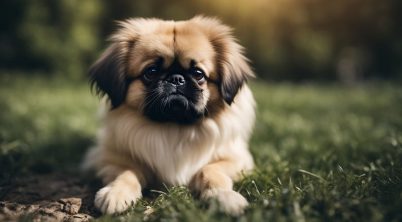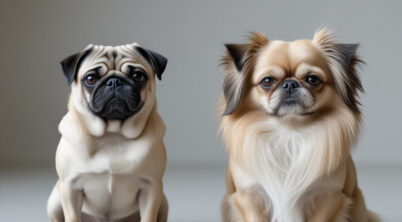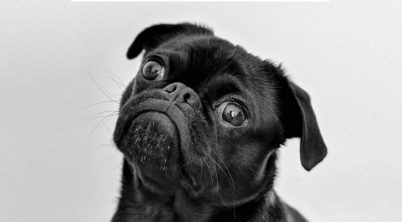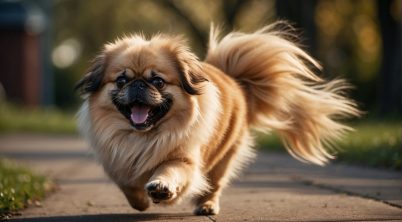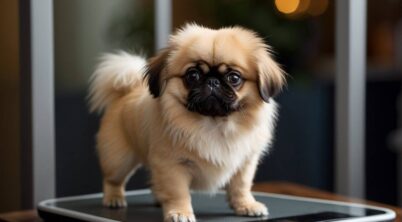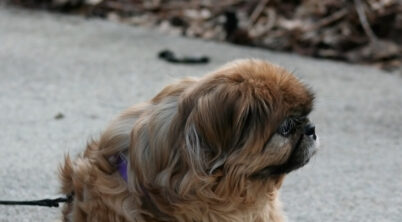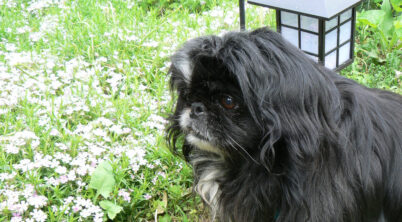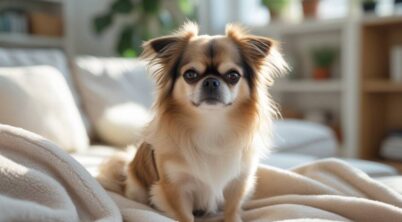The Pekingese is a dog breed with an ancient and distinguished heritage, originating in China. Bred for centuries to serve as a companion to the royalty of the Chinese Imperial court, the Pekingese was a fixture in the palaces and homes of the nation’s elite. Its very name is derived from the historical name of Beijing, the city that housed the Forbidden City and the heart of Chinese royalty. In its country of origin, it was not merely a pet but a symbol of imperial status and a treasure of the nation.
Its purpose within the royal circles was multifaceted. This toy dog not only provided company but also embodied a certain cultural and aesthetic ideal. The breed’s physical features—from its lion-like mane to its rolling gait—echo the opulence and regal air that befit an imperial household. Throughout its history within ancient China, the Pekingese has been revered as much for its loyal companionship as for its ornamental appearance.
Today, while the context of imperial courts has faded into history, the Pekingese continues to fulfill its primary purpose as a devoted companion. Its regal bearing and affectionate nature make it a cherished pet for people around the world, as well as a living link to the luxurious past of an ancient civilization. The enduring appeal of the Pekingese lies in its combination of a dignified demeanor, striking appearance, and a loyal character that has captured hearts for generations.
Table of Contents
Pekingese Purpose
The Pekingese breed, with its long history, originates from China. They were brought into existence to serve as companions to the Chinese Imperial Court. Specifically, they were ornamental pets for emperors and their courtiers. Their duty, apart from companionship, included serving as personal guard dogs, albeit small in size.
These dogs were so esteemed that they were part of the royal entourage and lived in the Forbidden City. They were uniquely bred for physical attributes that matched the Imperial household’s grandiosity and opulence. Among them, the miniature versions, charmingly referred to as “Sleeves”, were particularly treasured for their size that allowed them to fit in the sleeves of their owner’s garments, offering both warmth and company.
In modern times, the toy dog continues to thrive as a favored pet owing to their loyalty and affectionate nature. They exhibit a dignified and regal demeanor much like their historical counterparts in the palaces. Households, individuals, and the elderly find the Pekingese to be a devoted family member and a pet with a notable presence, despite its small stature.
| Trait | Description |
|---|---|
| Loyalty | Highly valued for its devotion to its owners |
| Appearance | Ornamental with a distinct lion-like mane |
| Companionship | Excellent for providing affection and warmth |
In essence, the Pekingese serves as a living link to ancient Chinese culture while fulfilling its role as a cherished and elegant companion in homes around the world.
Origins and History
The Pekingese breed has a storied past that intertwines with ancient Chinese culture, spirituality, and imperial history before its Western introduction in the late 19th century. This section delves into the deep historical roots and the significant role that Pekingese dogs held in Chinese dynasties, as well as how they came to be recognized in the Western world.
Ancient Chinese Lineage
The Pekingese is among the oldest dog breeds with its origin tracing back to ancient China. These dogs were developed as companion animals for the nobility and emperors in the Chinese Forbidden City. With a history spanning over a thousand years, the Pekingese was a symbol of exclusivity; ownership was solely reserved for Chinese royalty.
Buddha and Lion Connection
Buddhist legend has it that the lion, a revered symbol, shrunk down into the form of a Pekingese at the request of a deity. This connection to the lion resulted in a breed with a distinct lion-like appearance, reinforced by their flowing manes and stout body.
The Role of Pekingese in Chinese Royalty
The Pekingese held a significant place in the Forbidden City, serving both as lap dogs and as companions exuding the opulence of Chinese emperors. These dogs were so esteemed that they had their attendants within the royal palaces and were often referred to as “lion dogs” symbolizing Buddha’s own lion.
Western Introduction and Queen Victoria
The breed was introduced to the Western world following the Second Opium War when British troops invaded the Summer Palace. In 1860, five Pekingese dogs were found and taken from the palace; one of which, named Looty, was presented to Queen Victoria. This marked the beginning of the breed’s history in Europe as they became highly sought after by British dog enthusiasts.
The transition of the Pekingese from an exclusive Chinese royal treasure to a beloved companion in Western society denotes its enduring appeal and historical significance.
Breed Standard and Classification
The Pekingese breed is recognized for its distinctive appearance and historical significance. This section discusses its official classifications and the standards for size and weight as defined by kennel clubs.
Kennel Club Recognitions
The Pekingese is a breed classified under the toy group by major kennel clubs. The American Kennel Club (AKC) lists the Pekingese in its Toy Group, emphasizing the breed’s status as a companion dog with an ancient lineage. It portrays the Pekingese in terms of its physical attributes, such as being well-balanced and compact, with a characteristic rolling gait.
Size and Weight Specifications
Specific criteria for size and weight are essential for maintaining the integrity of the breed. The Pekingese is a small but sturdy dog, and kennel clubs provide guidelines to help breeders and judges assess these dogs.
- Height at Withers:
For a Pekingese, height at the withers—the ridge between the shoulder blades—is typically around 6-9 inches (15-23 cm). - Weight:
There are distint weight classes within the breed itself:- Ideal Weight: Approximately 14 pounds (6.35 kg) for adult Pekingese.
- Historically, smaller “Sleeve Pekingese,” named for being carried in the voluminous sleeves of Chinese nobility, were particularly valued for their tinier stature.
The breed should present a compact form, with a heavier front and lighter hindquarters, and while size and weight are indicators, the overall balance is key. Dogs must meet these standards while ensuring freedom of movement and without any health issues caused by excessive physical traits.
Temperament and Behavior
The Pekingese breed showcases a unique blend of temperament traits, ranging from an affectionate character to a dignified independence. This section breaks down their multifaceted nature into three key areas: social tendencies, independent attitudes, and their interactions with others.
Social and Affectionate Nature
Pekingese are affectionate companions, often forming strong bonds with their owners. They exhibit a friendly demeanor towards familiar faces, craving attention and reciprocating with devotion. Despite their small stature, they possess a social inclination, enjoying the company of those they trust.
Independent and Regal Attitude
Their regal bearing is reflective of their history as imperial companions in ancient China. Pekingese display an independent spirit, which can sometimes be perceived as stubbornness. Training requires patience as they are intelligent, but may choose to follow commands on their own terms.
Interaction with Children and Other Pets
When it comes to children, Pekingese can be amiable, however, they prefer respectful interaction and may not tolerate rough play. Their social nature extends to other pets, but careful introduction is necessary. Due to their affectionate yet regal temperament, they often do well with animals that respect their autonomy.
Care and Maintenance
When it comes to the Pekingese, meticulous grooming, suitable exercise, and attentive healthcare are crucial for their well-being. These elements ensure that the Pekingese enjoys a quality life in its loving home.
Grooming Requirements
Grooming is non-negotiable for the Pekingese due to their long, coarse, double coat. Regular brushing—at least once a week—is required to prevent matting. During shedding seasons, daily brushing might become necessary. Bathing should be done monthly, or as needed, while paying special attention to cleaning the facial wrinkles to avoid irritation.
- Brushing Frequency: Weekly to daily during shedding season
- Bathing Routine: Monthly or as required
It’s crucial to initiate grooming routines early in life to acclimate the Pekingese to regular handling.
Exercise and Activity Levels
Despite their small size, Pekingese possess moderate exercise needs. They should engage in daily activities to maintain their health and prevent obesity, which can exacerbate potential breathing difficulties. Two 20-minute walks per day or play sessions are generally sufficient for their exercise requirements.
- Exercise Suggestions:
- Short, leisurely walks
- Playtime with toys or in a safe, enclosed space
Pekingese are brachycephalic (short-headed), so owners should monitor their exercise to ensure they do not overexert and struggle to breathe.
Healthcare and Veterinary Needs
The Pekingese’s healthcare requires vigilant oversight from their guardians and a good relationship with a veterinarian. Common health issues include breathing difficulties, which are inherent to their brachycephalic nature, and eye concerns. Consistent veterinary check-ups aid in monitoring and maintaining their overall health.
- Veterinary Check-Up Frequency: At least once a year or as recommended by the vet
- Common Health Concerns: Breathing issues, eye problems, and obesity
With proper care, Pekingese have a life expectancy of 12-15 years. Early health screenings and preventive care play a significant role in achieving this lifespan.
Training and Socialization
Successful training of a Pekingese hinges on understanding their independent nature and the strategic use of positive reinforcement to motivate them. Early socialization is crucial to ensure that they emerge as well-adapted and sociable pets.
Overcoming Stubbornness with Positive Reinforcement
Pekingese dogs may exhibit a stubborn streak, but they respond well to training that employs positive reinforcement techniques. Rewards such as treats, praise, or playtime effectively encourage them during training sessions. To foster trainability, it’s essential to:
- Identify what motivates the individual Pekingese dog.
- Use consistent commands and rewards to reinforce desired behaviors.
- Keep training sessions short, engaging, and free of negative discipline.
Importance of Early Socialization
Socialization should begin early in a Pekingese puppy’s life, as it is critical to their development. They need exposure to various people, environments, and other animals to grow into well-rounded adult dogs. The keys to proper socialization include:
- Introducing the Pekingese to new experiences regularly.
- Ensuring interactions are positive and non-threatening.
- Balancing social encounters with routine to provide a sense of security.
Pekingese in Modern Society
The Pekingese, once a symbol of imperial splendor, has transitioned seamlessly into various roles in today’s society, extending well beyond mere lap companionship.
Roles Beyond Companion Animals
Though primarily known as affectionate companion dogs, Pekingese have also found roles as watchdogs due to their alert and attentive nature. In urban environments like apartments, where space is at a premium, they adapt well due to their small size and moderate exercise needs. Their history as guard dogs, nicknamed “lion dogs” due to their resemblance to Chinese guardian lions, underscores their traditionally vigilant character within sophisticated surroundings.
Pop Culture and Famous Pekingeses
Pekingese have made their mark in pop culture, with notable mentions in literature and appearances in films. A Pekingese named Sun Yat was aboard the Titanic and became one of the few canine survivors, embedding the breed into a historical context. This event highlighted the breed’s enduring presence alongside their owners in various environments and circumstances. Their distinct features and serene demeanor continue to capture the interest and affection of pet lovers around the globe.

